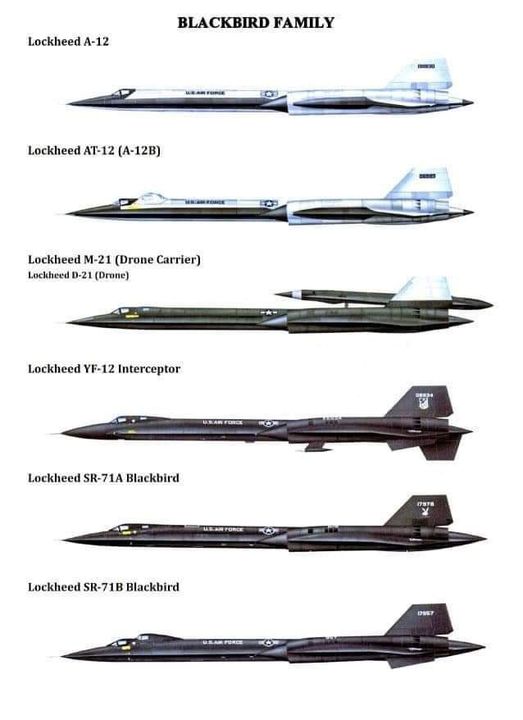The aircraft was painted black, and soon earned its name: “Blackbird.”
At Lockheed’s advanced development group, the legendary Skunk Works in Burbank, work on a revolutionary intelligence aircraft had already begun before the shooting down of Gary Power’s U-2. This innovative aircraft had to fly faster than any aircraft before or since, at greater altitude, and with a minimal radar cross section (RCS).
President Eisenhower deeply valued the strategic benefits of the U-2’s airborne reconnaissance during these tense Cold War times. And now the call came from Lockheed’s customer in Washington to build the impossible – an aircraft that can’t be shot down – and do it fast.

As explained in the article Creating The Blackbird appeared on Lockheed Martin website, Kelly Johnson, one of the preeminent aircraft designers of the twentieth century, and his Skunk Works team had a track record of delivering “impossible” technologies on incredibly short, strategically critical deadlines.
However according to Johnson this new aircraft was in a different category from anything that had come before. “Everything had to be invented. Everything,” he said. He committed Skunk Works to succeed in its toughest assignment to date: to have the innovative, challenging, envelope-bursting aircraft flying in a mere twenty months.
The speed of the new aircraft was to exceed 2,000 mph. Even if other planes of the era could approximate that speed but only in short, after-burner-driven bursts, this new plane needed to maintain a record-setting speed for hours at a time. At such velocity, friction with the atmosphere generates temperatures that would melt the conventional airframe.

With anticipated temperatures on the aircraft’s leading edges exceeding 1,000 degrees Fahrenheit, dealing with the heat raised a host of seemingly insurmountable design and material challenges. The only option to overcome these problems was to use titanium alloy which would have provided the strength of stainless steel, a relatively light weight, and durability at the excessive temperatures.
Titanium, however, proved to be a particularly sensitive material from which to build an airplane. The brittle alloy shattered if mishandled, which meant great frustration on the Skunk Works assembly line, and new training classes for Lockheed’s machinists.
Furthermore while friction would generate incredible heat at the leading edges of the aircraft, the ambient temperature outside the cockpit window would be -60 degrees Fahrenheit. Skunk Works’ Ben Rich spent untold hours tackling the problem of how heat could be dissipated across the entire airframe. Then he recalled a simple lesson from one of his university courses: Black paint both emits and absorbs heat. The aircraft was painted black, and soon earned its name: “Blackbird.”
The original Blackbird was designated the A-12 and made its first flight on Apr. 30, 1962. The single-seat A-12 soon evolved into the larger SR-71, which added a second seat for a Reconnaissance Systems Officer and carried more fuel than the A-12. The SR-71’s first flight was on Dec. 22, 1964.
Reducing the size of the Blackbird’s radar image meant an even further reduction in the likelihood that the plane would be perceived and shot down. Even though the initial test results were good, rumors of Soviet radar advances led the U.S. government to ask for an even smaller radar profile.
Surfaces had to be redesigned to avoid reflecting radar signals, the engines moved to a subtler mid-wing position, and a radar-absorbing element was added to the paint. Then a full-scale model of the Blackbird was hoisted on a pylon for radar testing at a Skunk Works’ secret location in the Nevada desert. With tests carefully scheduled to avoid Soviet satellite observations, the results were impressive: The Blackbird model, more than 100 feet in length, would appear on Soviet radar as bigger than a bird but smaller than a man. The team had succeeded in reducing radar cross section by 90 percent.
The pressure mounted to deliver the Blackbird to service on Oct. 27, 1962 when, at the height of the Cuban missile crisis, Air Force Major Rudolph Anderson was piloting a U-2 reconnaissance mission over Cuba and suffered a fatal injury from a Soviet surface-to-air strike.

Skunk Works responded, diligently and creatively persisting through the many problems that arose as flight testing pushed the envelope. Breaking records nearly every time it flew, the Blackbird achieved a sustained speed above Mach 3 on July 20, 1963, at an astounding altitude of 78,000 feet. The challenges kept coming: Zipping across the sky at 3,000 feet per second, the rules of navigation needed be rewritten. Visual references for conventional flying—highways, rivers, and metropolitan areas—were rendered obsolete, giving way to mountain ranges, coast lines, and large bodies of water.
Piloting the Blackbird was an unforgiving endeavor, demanding total concentration. But pilots were giddy with their complex, adrenaline-fueled responsibilities. “At 85,000 feet and Mach 3, it was almost a religious experience,” said Air Force Colonel Jim Wadkins. “Nothing had prepared me to fly that fast… My God, even now, I get goose bumps remembering. ”

At that speed and altitude, even the best air defense systems had no hope of catching the Blackbird. When anti-aircraft weapons were fired, a warning light glowed red on the control panel. But that would typically be the last the pilot would see of the attempted attack, as surface-to-air missiles consistently missed wildly, exploding many miles from the intended target.
